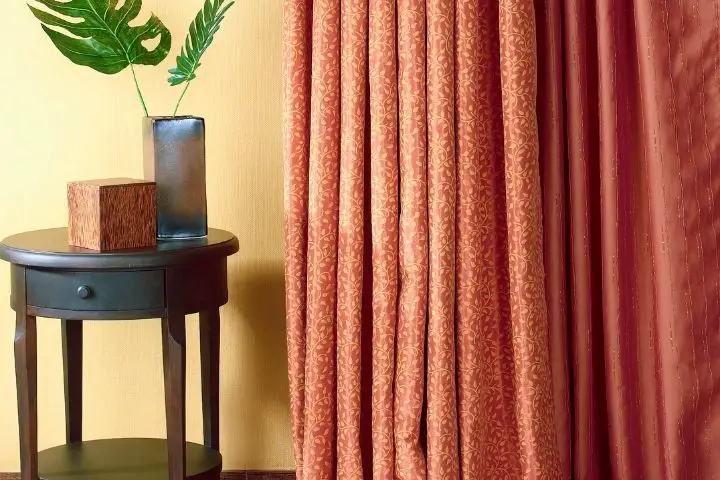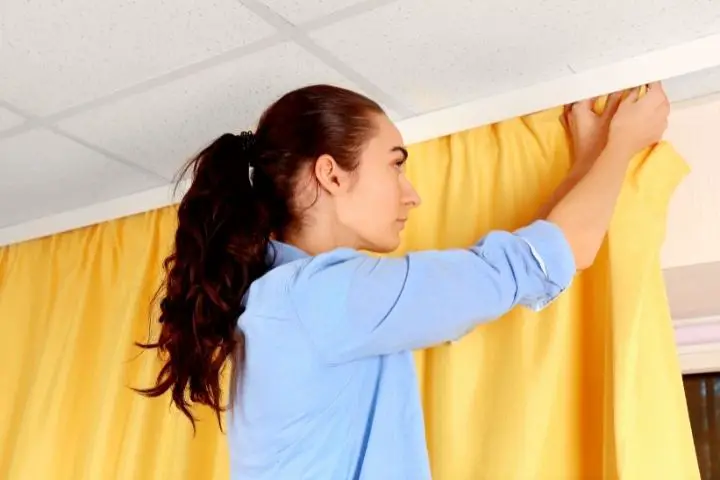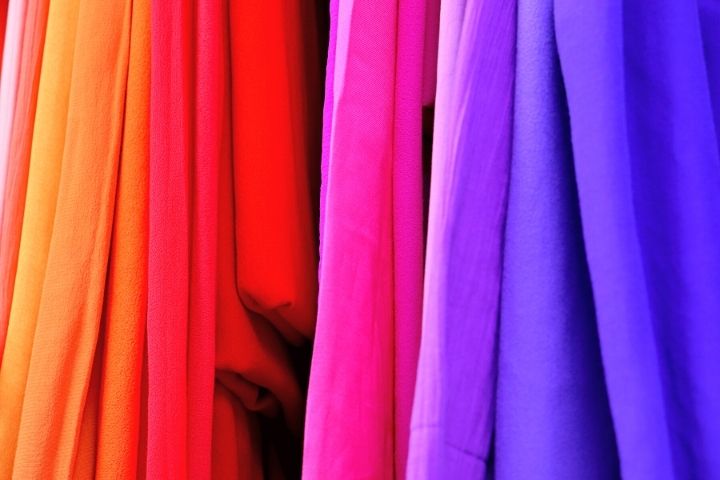Blackout Vs Thermal Curtains | What’s the difference?
What is the difference between blackout and thermal curtains? Are these just two names for the same product? Or is there a real difference in how these window treatments transform your home?
Part of being an adult is finding the answers to these questions and more.
Some of us enjoy the so-called homemaking process and could spend hours researching the best solutions. But there are just as many of us who would rather enjoy our free time than spend an eternity shopping for household goods. (Don’t worry, you’ll find lots of useful info below no matter which side you fall on!)
While very similar, blackout and thermal curtains are not exactly the same. But one thing both types of curtains do have in common is that they are energy-efficient! In short, blackout curtains focus on keeping rooms dark, while thermal curtains’ main focus is to regulate the temperature!
Let’s take a closer look at what blackout and thermal curtains have to offer you and your home:
What Are Blackout Curtains?
Blackout curtains are defined by their ability to block nearly all light coming through the covered window. These curtains are extremely popular in bedrooms and media rooms. However, there’s also plenty of reason to hang blackout curtains throughout your home’s other living spaces.
Blackout curtains can be made of a variety of materials. But there are several features ubiquitous in the world of blackout curtains:

- Blackout curtains are typically made of densely woven fabrics. Since these fabrics naturally allow very little light to pass through, they’re the perfect option for creating a blackout window treatment.
- Many blackout curtains boast two or more fabric layers. This boosts the curtains’ light-blocking qualities even more, especially if the room-facing fabric is of a looser weave.
- The most effective blackout curtains also have a thin layer of foam inserted between the fabric layers.
What Are Thermal Curtains?
Thermal curtains are designed to stop cold air from passing through the covered windows. According to the US Department of Energy, up to 30% of household heating and cooling is lost through the home’s windows.
Many people utilize thermal curtains throughout the winter months to conserve as much heat as possible. However, these curtains work just as well to keep cool air from seeping out of the home during summer.
Unsurprisingly, thermal curtains use a nearly identical strategy to blackout curtains in order to block the transfer of heat:
- Thermal curtains rely on thick, tightly woven textiles to keep heat from passing through. If a particular fabric would keep you warm on a chilly day, there’s a good chance it would make a good set of thermal curtains. While thermal curtains can be made of many fabrics, synthetic materials like microfiber and polyester are the most effective.
- Like blackout curtains, thermal curtains almost always have two or more layers. Typically, a layer of insulating foam or felt is sandwiched between two pieces of fabric.
- Many thermal curtains contain an extra layer called a vapor barrier. This layer helps manage condensation and other moisture problems that can occur around insulated windows.

Blackout Curtains Vs Thermal Curtains
Your personal interior design goals are the most important when choosing between thermal curtains vs blackout curtains. After all, there’s little point in buying a set of thermal drapes when your goal is to block out any and all sunlight!
With that said, the ability to block sunlight or outdoor temperatures is not the only factor that affects your curtain-shopping ventures.
Outside of their basic functions, these specialty curtains are remarkably similar:
Energy Efficiency
Both blackout and thermal curtains are energy-efficient in their own ways. The best option for your home largely depends on the climate, time of year, and personal heating and cooling pain points.
Obviously, thermal curtains excel at maintaining the temperature of your home. This is true whether the outdoor temperature is hotter or cooler than the interior.
Blackout curtains also offer this type of insulation, though generally not to the extent of dedicated thermal curtains. Blackout curtains also block sunlight — the sun can raise your home’s internal temperature a surprising amount in the summertime!
Covering your home’s windows with either type of curtain during extreme heat or cold can save you money on utilities and lower your carbon footprint.
Appearance

In years past, blackout curtains were only available in extremely dark fabrics. Today, however, you can find blackout curtains in any color or pattern imaginable. The same is true of thermal curtains.
Care
Because these heavy-duty curtains are made of several layers of varying materials, they tend to require more delicate care than “regular” curtains.
Whether you opt for thermal or blackout curtains, expect to spend a bit of extra time keeping them clean. Unless the care label states otherwise, stick to spot-cleaning with a vacuum and fabric-safe detergent.
With recent innovations, many blackout curtains are now machine-washable. We’ve also come across a few machine-washable thermal curtains that are now available. But you should never throw your drapes in the washing machine unless the care label explicitly recommends it!
Frequently Asked Questions
Are Blackout Curtains Toxic?
Volatile organic compounds (VOCs) are potentially toxic compounds that can be released via off-gassing into the home from things like furniture or drapes.

Blackout (and, by extension, thermal) curtains are frequently named in the conversation about VOCs because of the thick, synthetic fabrics used to make them. However, blackout curtains are far from the only source of VOCs in your home.
For maximum peace of mind, invest in blackout or thermal curtains certified by OEKO-TEX as being free of hazardous chemicals!
How Do Thermal Blackout Curtains Work?
Thermal blackout curtains combine the best of both worlds by blocking light and temperature differences from outside your windows!
This combination is actually incredibly common, so there’s no need to choose between thermal-lined vs blackout curtains if you want the benefits of both.
What Are Room-Darkening Curtains?
Room-darkening curtains are essentially blackout curtains that allow a very small amount — usually between 1% and 5% — of light to pass through. These curtains are a great alternative for young children (or adults!) who don’t enjoy being in a pitch-black room when they wake up in the morning.






